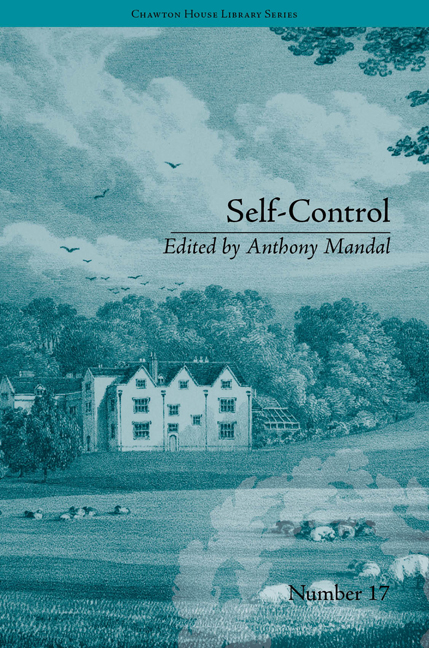Introduction
Summary
I am looking over Self Control again, & my opinion is confirmed of its’ being an excellently-meant, elegantly-written Work, without anything of Nature or Probability in it. I declare I do not know whether Laura's passage down the American River, is not the most natural, possible, every-day thing she ever does.
Jane Austen (1813)Why should an epic or a tragedy be supposed to hold such an exalted place in composition, while a novel is almost a nickname for a book? Does not a novel admit of as noble sentiments – as lively description – as natural character – as perfect unity of action – and a moral as irresistible as either of them?
Mary Brunton (1814)Mary Brunton's Self-Control (1811) is one of those novels. For people who read or study Romantic fiction in general, and Jane Austen's novels in particular, it is a familiar title – a recognizable touchstone which, we might recall, enjoyed some form of popularity around the time Austen herself was being published. At the same time, Self-Control is also a novel that has been long forgotten, despite initial critical success and republication throughout the nineteenth century. Self-Control is a text that, by and large, remains unread, even if it is spoken of, its author consigned to obscurity. And yet, when Self-Control appeared in the spring of 1811, six months before Austen's Sense and Sensibility, it was Brunton's first novel that was the sensation of the year, an overnight bestseller, and not Austen's. A religious tale written by a self-doubting Presbyterian, which attempts to inculcate moral lessons through the example of its prudent heroine, hardly sounds like the stuff that commercial success is made of. Nevertheless, Self-Control and its beleaguered protagonist, Laura Montreville, struck a chord with the reading public, resulting in the novel running to four editions within the first year of its appearance.
- Type
- Chapter
- Information
- Self-Controlby Mary Brunton, pp. xiii - xlivPublisher: Pickering & ChattoFirst published in: 2014



